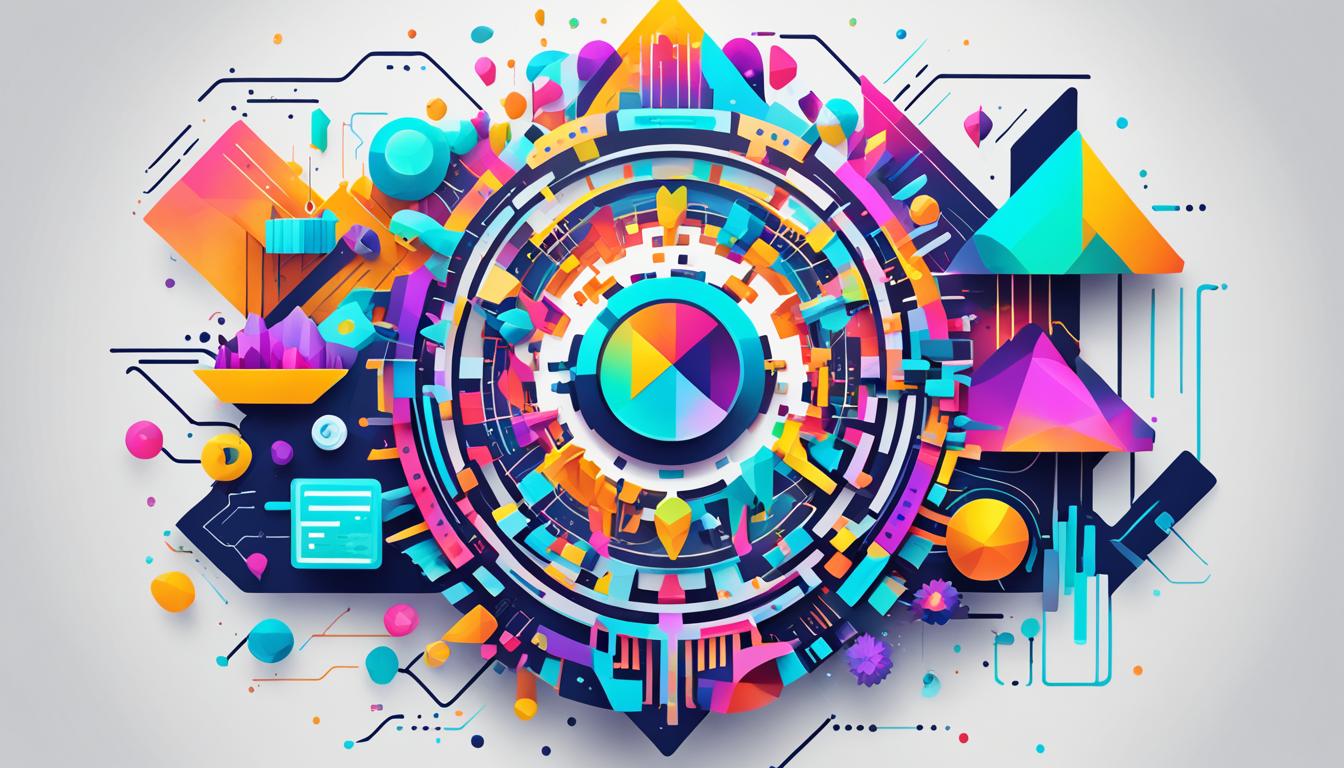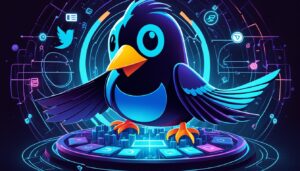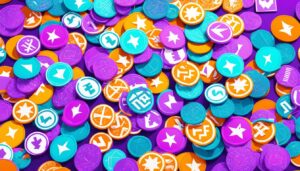In the ever-evolving digital landscape, a new phenomenon has emerged that is captivating the attention of creators, collectors, and investors alike – non-fungible tokens (NFTs). These digital assets are revolutionizing the way we think about ownership and value in the virtual realm. In this article, we’ll dive deep into the world of NFTs, exploring their unique characteristics, potential applications, and the mechanics that power this exciting new frontier of the digital economy.
NFTs are digital certificates of ownership and authenticity, built on blockchain technology. They are unique, one-of-a-kind digital items that can represent anything from art and collectibles to in-game assets and virtual real estate. Unlike traditional cryptocurrencies, which are fungible and interchangeable, each NFT is distinct and cannot be replaced or exchanged for an identical item.
The potential applications of NFTs are vast and diverse. They are revolutionizing the way we think about ownership and value in the digital world, empowering creators to monetize their digital creations and collectors to invest in unique, verifiable assets. From digital art and collectibles to gaming and virtual real estate, NFTs are transforming various industries, offering new opportunities for innovation and disruption.
Unveiling the World of Non-Fungible Tokens (NFTs)
In the ever-evolving world of digital assets, a new and captivating phenomenon has emerged: non-fungible tokens, or NFTs. These unique digital creations are revolutionizing the way we think about ownership, scarcity, and the value of virtual items. From digital art and collectibles to gaming and intellectual property, NFTs are unlocking a world of possibilities.
Defining NFTs and Their Unique Characteristics
Non-fungible tokens are digital assets that are unique and cannot be replaced or interchanged with another item. Unlike cryptocurrencies, where one Bitcoin is equal to another, each NFT is distinct and has its own set of attributes, making it one-of-a-kind. This non-fungibility is achieved through the use of blockchain technology, which serves as a secure and transparent ledger to record the ownership and provenance of these digital assets.
The key characteristics of NFTs include:
- Uniqueness: Each NFT is a distinct digital asset, with its own set of attributes and metadata.
- Scarcity: NFTs can be created in limited quantities, adding to their perceived value and exclusivity.
- Ownership Verification: The blockchain technology behind NFTs ensures the authenticity and ownership of these digital assets.
Exploring the Potential Applications of NFTs
The potential applications of non-fungible tokens are vast and exciting. While the initial hype around NFTs has centered on the digital art and collectibles market, the technology has far-reaching implications across various industries:
- Digital Art and Collectibles: NFTs have revolutionized the way digital art is bought, sold, and traded, allowing artists to create and sell unique digital artworks with verifiable ownership and scarcity.
- Gaming: NFTs are transforming the gaming industry by allowing players to own and trade in-game assets, such as digital characters, weapons, or even virtual real estate.
- Intellectual Property Management: NFTs can be used to represent and protect intellectual property, such as patents, trademarks, or copyrights, by providing a secure and transparent means of tracking ownership and licensing.

As the world of non-fungible tokens continues to evolve, the potential applications of this innovative technology are only just beginning to be explored. From transforming the way we interact with digital assets to unlocking new revenue streams for creators and businesses, the future of NFTs is undoubtedly exciting and full of promise.
What Is An NFT And How Does It Work
Non-Fungible Tokens (NFTs) have emerged as a groundbreaking innovation in the digital world, revolutionizing the way we think about digital ownership and scarcity. At the core of NFTs lies blockchain technology, which provides a secure and transparent platform for verifying the authenticity and ownership of digital assets.
Fundamentally, an NFT is a unique digital token that represents ownership of a specific digital item, such as art, collectibles, or even virtual real estate. Unlike traditional digital files that can be easily copied and replicated, each NFT is one-of-a-kind, with its own distinct digital signature stored on the blockchain.
The Role of Blockchain in NFTs
Blockchain technology is the backbone of NFTs, enabling the creation, verification, and secure transfer of these unique digital assets. When an NFT is minted, a smart contract is deployed on the blockchain, which records the metadata and ownership information of the digital item. This ensures that the NFT is verifiably scarce and its ownership can be easily tracked and transferred.
The blockchain acts as an immutable ledger, providing a transparent and secure record of all NFT transactions. This allows buyers and sellers to verify the authenticity and provenance of an NFT, ensuring that it is a genuine and unique digital asset.
Establishing Digital Ownership and Scarcity
One of the key advantages of NFTs is their ability to establish digital ownership and scarcity. Unlike traditional digital files, which can be endlessly replicated, each NFT is a unique digital item with its own intrinsic value. This scarcity creates a sense of rarity and exclusivity, making NFTs attractive to collectors, artists, and investors alike.
By leveraging blockchain technology, NFTs provide a reliable and transparent mechanism for verifying the ownership and authenticity of digital assets. This empowers creators to monetize their digital creations, while allowing collectors to invest in unique and verifiable digital items.
| Key Aspects of NFTs | Explanation |
|---|---|
| Blockchain Technology | NFTs are built on blockchain, which provides a secure and transparent platform for verifying the authenticity and ownership of digital assets. |
| Digital Ownership | NFTs enable true digital ownership, where each token represents a unique and verifiable digital asset. |
| Digital Scarcity | NFTs create a sense of scarcity and exclusivity for digital items, as each token is one-of-a-kind. |
| Smart Contracts | Smart contracts deployed on the blockchain facilitate the creation, transfer, and authentication of NFTs. |
By understanding the underlying principles of how NFTs work, we can better appreciate the potential of this transformative technology to redefine the way we engage with and value digital assets in the years to come.

“NFTs are not just about art or collectibles – they represent a new paradigm for digital ownership and scarcity, with applications that extend far beyond the current hype.”
Minting and Trading NFTs: A Step-by-Step Guide
In this final section, we’ll walk you through the process of creating and minting your own non-fungible tokens (NFTs). We’ll cover the necessary tools and platforms, as well as the key considerations to keep in mind when turning your digital assets into valuable NFTs. Additionally, we’ll explore the leading NFT marketplaces and trading platforms, where you can buy, sell, and trade your NFTs securely and efficiently.
The Process of Creating and Minting NFTs
To create and mint your own NFTs, you’ll first need to set up a cryptocurrency wallet compatible with the blockchain network you plan to use, such as Ethereum or Solana. Once your wallet is ready, you can begin the process of creating your digital artwork, audio, or video files. These assets can be original works or even existing digital items you own. When you’re satisfied with your creation, you’ll need to upload it to a supported NFT platform, where you can mint it as a unique and verifiable token.
Popular NFT Marketplaces and Trading Platforms
With your NFT minted, you can now list it for sale on one of the leading NFT marketplaces. These platforms, including OpenSea, Rarible, and SuperRare, provide a secure and user-friendly environment for buying, selling, and trading NFTs. Each marketplace has its own set of features and specialties, so it’s worth exploring a few to find the one that best suits your needs. Once your NFT is listed, you can start connecting with potential buyers and collectors, and participate in the exciting world of NFT-based digital ownership and trading.




